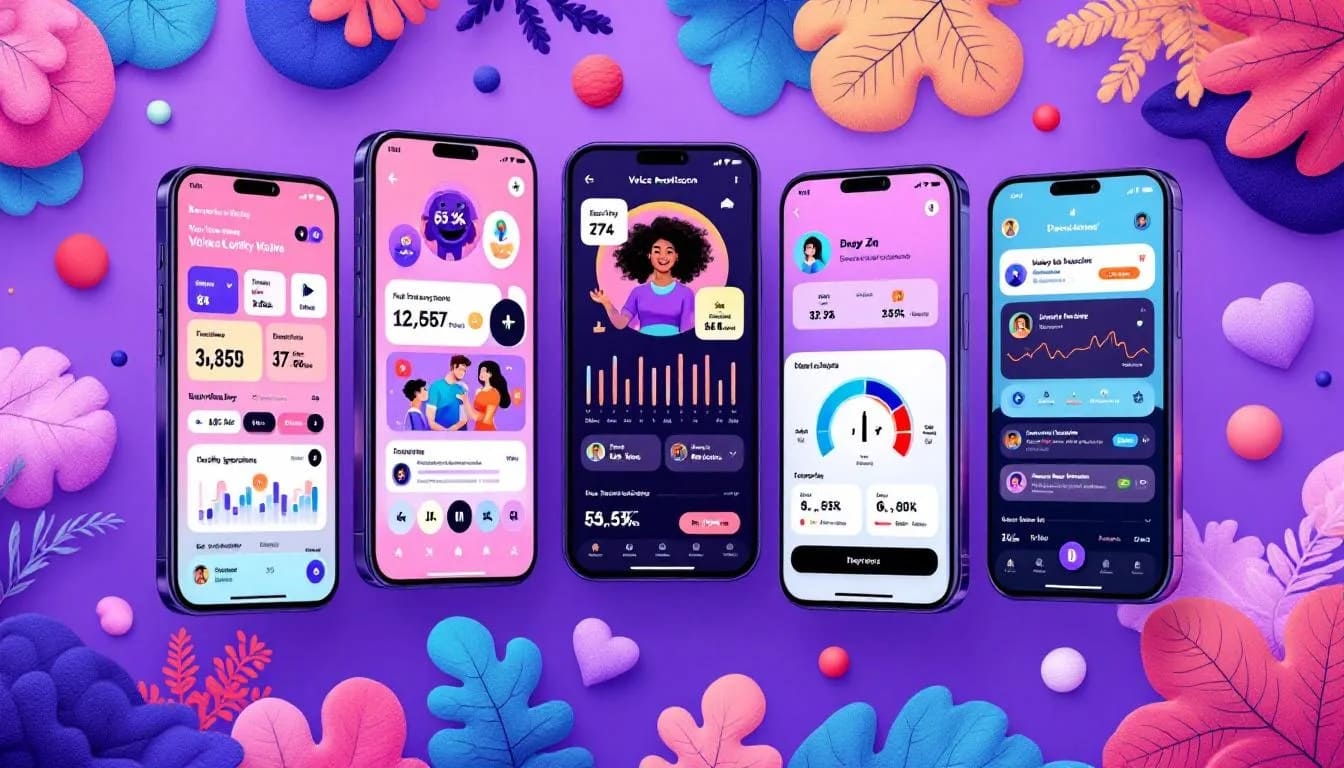Are you struggling to navigate the complexities of IoT application development? With the rapid evolution of the Internet of Things (IoT), many businesses find themselves grappling with the challenges of integrating and managing their IoT applications effectively. What if you could streamline your development efforts and ensure the success of your IoT initiatives? The answer lies in understanding the dynamics of IoT application development.
In this comprehensive guide, we will navigate the intricacies and best practices in IoT application development, giving you essential insights to prepare for 2025. Whether you are a business owner, a tech enthusiast, or an IT professional, this guide will provide actionable strategies to enhance your IoT projects and foster a robust ecosystem tailored to your objectives.
IoT Application Development Best Practices
Key Considerations for Successful Development
The journey of IoT application development is fraught with numerous challenges. To ensure the successful deployment of your IoT applications, keep the following considerations in mind:
- User-Centric Design: At the heart of every successful application is a focus on user needs. Create user personas and gather feedback to design intuitive interfaces that enhance user experience.
- Scalability: Your application should be designed to scale effortlessly as the number of connected devices grows. Ensure that your architecture can handle increased data volume and user load.
- Interoperability: As various devices and platforms interact within your IoT ecosystem, it’s crucial to ensure your application can communicate seamlessly with different IoT standards and protocols. This reduces integration issues and enhances functionality.
- Data Security: Security must be a top priority throughout the development process. Incorporate encryption, secure data storage, and regular updates to safeguard against vulnerabilities.
Common Pitfalls in IoT Application Development
Apart from the best practices, awareness of common pitfalls can save you time and resources during IoT application development:
- Neglecting Security: One of the most significant oversights is underestimating security threats. Failure to implement adequate security measures may lead to data breaches and compromised systems.
- Poor Data Management: Inadequate handling of data can result in bottlenecks. Ensure that your data management strategy includes effective data collection, storage, and analysis techniques to harness the full potential of IoT.
- Overcomplicating Solutions: Complexity often leads to increased costs and confusion. Aim for simplicity in your designs, making it easy for end-users to interact with your IoT applications.
- Ignoring Regulatory Compliance: IoT applications often need to comply with various regulations. Familiarize yourself with local laws governing data privacy and protection to avoid legal issues.
By avoiding these pitfalls and focusing on the key considerations, you’ll significantly enhance the chances of your IoT application’s success.
Implementation Roadmap for IoT Application Development
Defining Your Goals and Objectives
Before diving into IoT application development, it is essential to establish clear goals and objectives. Consider the following aspects while defining your roadmap:
- Business Needs: Identify how IoT can solve specific business challenges. This could involve enhancing operational efficiency, improving customer engagement, or creating new revenue streams.
- Target Audience: Understand who your end users are and what problems they face. This insight will inform your design and functionality decisions, ensuring alignment with user needs.
- Key Performance Indicators (KPIs): Establish measurable KPIs to track progress and success throughout the development process. These could include user adoption rates, return on investment (ROI), or system uptime.
Phases of the IoT Development Process
An effective implementation roadmap for IoT application development can be broken down into key phases:
- Planning: Begin with comprehensive planning, including technology assessment, resource allocation, and timeline estimates.
- Architecture Design: Develop a solid architectural framework that defines how all components (sensors, networks, and applications) will interact.
- Development: This phase includes coding, integrating backend services, and ensuring that all components are working together seamlessly.
- Testing: Conduct rigorous testing to ensure functionality, usability, and security. Engage beta users to gain feedback for improvement.
- Deployment: Once testing is complete, deploy the application for public use. Monitor performance and user feedback closely.
- Maintenance: After deployment, continuous maintenance is crucial. Address bugs, implement updates, and refine functionality based on user feedback.
Following this roadmap will help streamline your IoT application development process, making it more efficient and effective.
Partnering with a Software Development Company
Selecting the Right Software Development Company
When embarking on the journey of IoT application development, partnering with an experienced software development company is crucial. Here are some key considerations:
- Expertise and Track Record: Evaluate the company’s expertise in IoT. Look for case studies or past projects that highlight their experience with similar applications.
- Technological Proficiency: Ensure that the software development company is proficient in the technologies required for your project, including cloud computing, data analytics, and mobile app development.
- Cultural Fit: Choose a company whose work culture aligns with your organization’s values. Effective communication and collaboration are essential for a successful partnership.
- Client Testimonials: Look for reviews, ratings, and testimonials from previous clients. These will provide insights into the company’s reliability and quality of work.
Benefits of Collaborating with Experts
Collaborating with a seasoned software development company can provide various advantages for your IoT application development:
- Access to Cutting-edge Technology: Leading companies stay up to date with the latest technologies and trends, enabling you to leverage advanced solutions for your application.
- Reduced Development Time: Experts streamline the development process, helping you bring your application to market faster.
- Ongoing Support and Maintenance: A reliable development company offers continued support post-launch, ensuring smooth operation and timely updates.
- Scalability and Flexibility: As your user base grows, a proficient partner can adapt and scale your application to meet increasing demands without compromising performance.
Forming a partnership with the right software development company can lay a strong foundation for your IoT application’s success.
Mobile App Development Company and IoT Applications
Trends in Mobile App Development for IoT
The integration of mobile applications with IoT devices is growing rapidly. Here are some key trends shaping this domain:
- Increased Personalization: Mobile solutions are becoming more user-centric, focusing on personalized experiences to enhance user engagement with IoT applications.
- Voice Assistants Integration: Voice-enabled IoT devices are on the rise. Incorporating voice assistants into mobile apps makes interaction more intuitive and user-friendly.
- Real-Time Data Analytics: As more data is generated by IoT devices, mobile apps are evolving to offer real-time analytics, giving users insights on the go.
- Edge Computing: With the growth of IoT devices, there’s a shift toward processing data closer to the source to reduce latency. Mobile apps are being designed to leverage this capability.
Integrating Mobile Solutions with IoT Devices
Integrating mobile app development with IoT applications involves several best practices:
- APIs and SDKs: Use Application Programming Interfaces (APIs) and Software Development Kits (SDKs) to promote seamless communication between mobile applications and IoT devices.
- User-friendly Interfaces: Design interfaces that are easy to navigate. Focus on minimizing user input requirements while maximizing the visibility of essential metrics and functionalities.
- Offline Capabilities: Consider the context in which users may operate. Enabling offline functionality allows users to access certain features even without an internet connection, improving usability.
- Regular Updates: Mobile app updates are essential for adding new features and ensuring security. An agile methodology can help streamline the update process.
By addressing these aspects, you can effectively integrate mobile solutions with IoT devices, thus enhancing overall user experience.
Future of IoT Application Development
Innovations Shaping IoT in 2025
As we move forward into 2025, several innovations are set to reshape the landscape of IoT application development:
- Artificial Intelligence (AI) and Machine Learning: The integration of AI will revolutionize how IoT applications analyze data, enabling them to provide predictive insights and automate decision-making processes.
- 5G Connectivity: The rollout of 5G networks will enhance the speed and reliability of IoT applications, allowing real-time communication and data transfer.
- Smart Edge Devices: The emergence of smart edge computing devices will facilitate real-time data processing closer to where the data is generated, drastically improving response times.
- Sustainable IoT: With increasing awareness about environmental impact, sustainable IoT solutions that focus on energy efficiency and responsible resource management are gaining traction.
Industry Insights and Predictions
Industry experts predict that the IoT market will continue to expand exponentially. Companies that prioritize innovation and user-centered design are likely to outperform their competitors. Furthermore, organizations focusing on security and privacy will build trust with users, essential for maintaining a competitive edge.
Moreover, industries such as healthcare, manufacturing, and smart cities will see substantial growth driven by IoT innovations, creating more opportunities for application development. Businesses will need to adapt quickly to keep pace with evolving technology and consumer expectations.
Ensuring Security in IoT Application Development
Key Security Considerations to Implement
As IoT applications become increasingly connected, security threats also escalate. Therefore, it is essential to consider the following security measures:
- Encryption: Implement end-to-end encryption to safeguard sensitive data as it moves between devices and the cloud.
- Access Controls: Utilize strong access controls, ensuring that only authorized users have access to critical functions and sensitive data.
- Regular Security Audits: Conduct frequent security assessments to identify vulnerabilities. This proactive approach helps in addressing potential risks before they escalate.
- Data Minimization: Collect only the data that is necessary for your application to function, minimizing exposure to potential breaches.
Best Practices for Securing IoT Applications
To further secure your IoT applications, adhere to the following best practices:
- User Education: Educate your users on the importance of security measures, such as using strong passwords and regularly updating their devices.
- Update Protocols: Ensure that firmware and application updates are carried out regularly. Automated update processes can help in maintaining security.
- Incident Response Plan: Develop a robust incident response plan to address breaches quickly and effectively. This includes having a dedicated team trained to handle security threats.
- Testing and Validation: Regularly test your applications for vulnerabilities and ensure that security measures are in place before deployment.
By integrating these security practices into your IoT application development, you can greatly reduce the risk of security breaches and instill confidence in your user base.
Conclusion
In summary, following best practices in IoT application development is crucial for your project’s success. From understanding user needs to ensuring robust security, each aspect plays an integral role in creating effective IoT solutions. As you embark on this journey, consider leveraging the expertise of a trusted partner like Wildnet Edge, which operates as an AI-first company. Their insights can help navigate the complexities of IoT application development, providing a competitive edge.
If you’re looking to enhance your IoT projects and move towards a successful 2025, take the necessary steps today by embracing expert insights.
FAQs
Best practices include understanding user needs, ensuring robust security, and continuous testing.
Start by defining goals, outlining phases, and allocating resources effectively.
Evaluate their expertise, portfolio, and client reviews to ensure a good fit for your project.
They provide expertise in creating user-friendly interfaces and seamless integrations with IoT devices.
Focus on AI integration, enhanced security, and improved user experiences as key trends for 2025.

Nitin Agarwal is a veteran in custom software development. He is fascinated by how software can turn ideas into real-world solutions. With extensive experience designing scalable and efficient systems, he focuses on creating software that delivers tangible results. Nitin enjoys exploring emerging technologies, taking on challenging projects, and mentoring teams to bring ideas to life. He believes that good software is not just about code; it’s about understanding problems and creating value for users. For him, great software combines thoughtful design, clever engineering, and a clear understanding of the problems it’s meant to solve.
 sales@wildnetedge.com
sales@wildnetedge.com +1 (212) 901 8616
+1 (212) 901 8616 +1 (437) 225-7733
+1 (437) 225-7733































